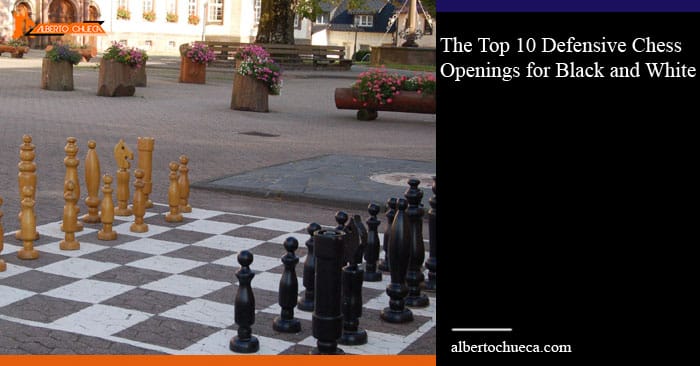Studying the Art of Defensive Chess Spaces: A Strategic Guide
Chess, often likened to a battlefield where minds clash in tactical warfare, demands an enthusiastic understanding of defensive tactics as very much as offensive moves. Just as a new skilled general fortifies their position before launching panic anxiety attack, the proficient chess participant must master defensive openings to foresee and counter their opponent's moves properly. In this comprehensive guide, we look into the realm involving defensive chess openings, exploring strategies, principles, and key ideas to help a person fortify your situation in addition to emerge victorious on the board. Understanding Defensive Chess Opportunities: Defensive chess opportunities aim to set up a solid foundation while thwarting the opponent's makes an attempt to seize control of the table early in the game. Contrary to aggressive openings concentrated on rapid growth and aggressive pawn thrusts, defensive openings prioritize stability, handle, and strategic overall flexibility. By adopting protective strategies, players keep pace with neutralize threats, maintain equilibrium, and progressively transition to a favorable mid-game location. Key Principles involving Defensive Chess Availabilities: 1. Solid Pawn Structures: Defensive opportunities often emphasize the particular establishment of robust pawn structures to encourage key squares in addition to limit the adversary's mobility. By managing the solid pawn cycle and avoiding unwanted pawn advances, participants can create some sort of resilient defense while preparing for counterattacks. 2. Flexible Enhancement: Flexibility is extremely important in defensive mentally stimulating games openings, allowing participants to adapt to their opponent's moves and exploit any kind of positional weaknesses. Selecting for flexible piece placement, like building knights before assigning bishops, enables participants to maintain control of the center when preserving their options for future moves. 3. Prophylactic Thinking about: Anticipating and preempting the opponent's risks through prophylactic techniques is a trademark of defensive chess play. By figuring out potential weaknesses in their position and using preventive measures to be able to address them, participants can disrupt their own opponent's plans plus maintain the project. 4. Counterattacking Opportunities: Defensive openings should not be synonymous with passivity; instead, they need to create opportunities intended for counterattacks and trickery strikes. By with patience increasing their place and capitalizing in opponent's overextension, gamers can turn the particular tide of the game in their own favor. Defensive Chess Opening Strategies: one. The Sicilian Security: Renowned for the resilience and counterattacking possible, the Sicilian Security (1. e4 c5) is a well-known choice among defensive-minded players. By challenging White's central pawn having an off-center pawn thrust, Black seeks to create instability and seize command over the critical d4 square. 2 . The French Security: Seen as its solid pawn structure and emphasis on piece activity, the French Defense (1. e4 e6) is a stalwart choice for players seeking some sort of defensive stance towards 1 . e4. Simply by restraining White's main pawns and planning to launch the counterattack for the kingside, Black should reduce the effects of White's early aggression and set up a reliable foothold inside the centre.  3. The Caro-Kann Defense: Known for its solidity and positional depth, the Caro-Kann Defense (1. e4 c6) is actually a favorite among players in search of a solid yet flexible defense against 1. e4. By bolstering the d5 square with the particular c6 pawn plus getting ready to develop pieces harmoniously, Black aims to neutralize White's central pawns and even maintain a strong position. Mastering defensive chess openings is definitely an essential skill for any aspiring player seeking to be able to elevate their game to new height. By embracing solid principles, strategic foresight, and tactical perspicuity, players can navigate the complexities associated with the opening phase with confidence plus poise. Whether taking on the Sicilian Defense's dynamic counterattacking fashion or the French Defense's solid positional play, understanding defensive openings empowers players to seize control of the plank and dictate the particular course of the game.
3. The Caro-Kann Defense: Known for its solidity and positional depth, the Caro-Kann Defense (1. e4 c6) is actually a favorite among players in search of a solid yet flexible defense against 1. e4. By bolstering the d5 square with the particular c6 pawn plus getting ready to develop pieces harmoniously, Black aims to neutralize White's central pawns and even maintain a strong position. Mastering defensive chess openings is definitely an essential skill for any aspiring player seeking to be able to elevate their game to new height. By embracing solid principles, strategic foresight, and tactical perspicuity, players can navigate the complexities associated with the opening phase with confidence plus poise. Whether taking on the Sicilian Defense's dynamic counterattacking fashion or the French Defense's solid positional play, understanding defensive openings empowers players to seize control of the plank and dictate the particular course of the game.